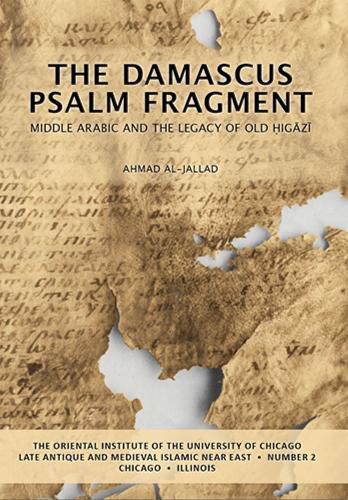Readings Newsletter
Become a Readings Member to make your shopping experience even easier.
Sign in or sign up for free!
You’re not far away from qualifying for FREE standard shipping within Australia
You’ve qualified for FREE standard shipping within Australia
The cart is loading…






The Damascus Palm Fragment investigates Arabic’s transformative historical phase, the passage from the pre-Islamic to the Islamic period, through a new approach. It asks, What would Arabic’s early history look like if we wrote it based on the documentary evidence?
The book frames this question through the linguistic investigation of the Damascus Psalm Fragment (PF), the longest Arabic text composed in Greek letters from the early Islamic period. It is argued that its language is a witness to the Arabic vernacular of the early Islamic period, and then moves to understand its relationship with Arabic of the pre-Islamic period, the Qur'anic Consonantal Text, and the first Islamic century papyri, arguing that all of this material belongs to a dialectal complex that we call Old Higazi. The book concludes by presenting a scenario for the emergence of standard Classical Arabic as the literary language of the late eighth century and beyond.
This is the second volume to appear in the new Oriental Institute series - Late Antique and Medieval Islamic Near East (LAMINE) - which aims to publish a variety of scholarly works, including monographs, edited volumes, critical text editions, translations, studies of corpora of documents, in short any work that offers a significant contribution to understanding the Near East between roughly 200 and 1000 CE.
$9.00 standard shipping within Australia
FREE standard shipping within Australia for orders over $100.00
Express & International shipping calculated at checkout
The Damascus Palm Fragment investigates Arabic’s transformative historical phase, the passage from the pre-Islamic to the Islamic period, through a new approach. It asks, What would Arabic’s early history look like if we wrote it based on the documentary evidence?
The book frames this question through the linguistic investigation of the Damascus Psalm Fragment (PF), the longest Arabic text composed in Greek letters from the early Islamic period. It is argued that its language is a witness to the Arabic vernacular of the early Islamic period, and then moves to understand its relationship with Arabic of the pre-Islamic period, the Qur'anic Consonantal Text, and the first Islamic century papyri, arguing that all of this material belongs to a dialectal complex that we call Old Higazi. The book concludes by presenting a scenario for the emergence of standard Classical Arabic as the literary language of the late eighth century and beyond.
This is the second volume to appear in the new Oriental Institute series - Late Antique and Medieval Islamic Near East (LAMINE) - which aims to publish a variety of scholarly works, including monographs, edited volumes, critical text editions, translations, studies of corpora of documents, in short any work that offers a significant contribution to understanding the Near East between roughly 200 and 1000 CE.